Lowdham Cocker Beck Flood Alleviation Scheme
Overview
Latest Construction News
For all latest construction updates, please refer to our Lowdham Storage Reservoir Facebook page which will present all the regularly updated information on the Flood Alleviation Scheme (FAS).
05/06/2024 - Lowdham Flood Storage Reservoir Construction Update
Lowdham Cocker Beck Flood Alleviation Scheme
Key Facts about the Lowdham Flood Alleviation Scheme
- 191 properties better protected from flooding*
- 1% Annual Exceedance Probability Standard of Protection
- 20% Biodiversity Net Gain target
- Enabling works started – 30/01/2023
- Main construction start – 30/10/2023
- Completion – April - June 2027
*During the detailed design review the hydraulic model was updated and it was found that there were fewer properties at risk and so this number has reduced from 195 properties. The standard of protection the Scheme will afford is unchanged.
Flooding
The village of Lowdham suffered a devastating winter of two flood events following Storm Babet on 21/10/ 2023 and Storm Henk on 02/01/2024. 143 properties were internally flooded during Storm Babet and another 40 during Storm Henk. The flooding was caused by a combination of surface water and fluvial overtopping. These events show the need for a large-scale Flood Alleviation Scheme (FAS).
Communication
For ease of communication between partners, communities and external parties with the Environment Agency, we’ve created a specific open project email inbox. This can be found at: LowdhamFSR@environment-agency.gov.uk. The public may send any information, queries or questions directly to this inbox.
What is a Flood Alleviation Scheme?
A Flood Alleviation Scheme (FAS) is a scheme of work to manage flood risk, reducing the likelihood and impact of flood events to property and infrastructure. Risk management authorities in England, such as the Environment Agency, are committed to reduce risk from flooding and work in partnership to deliver the programme of flood and coastal erosion risk management (FCERM) schemes.
Why does Lowdham need a FAS?
In recent years the village of Lowdham has seen repeated property flooding occurring in 1999, 2007, 2012, 2013, 2019, 2020, 2023 and very recently in 2024. The Cocker Beck is the source of fluvial flooding in the village, and is surrounded by properties and infrastructure, offering limited space for defences and flood storage. An FAS was constructed in 2000, using the recreation ground in Lowdham for flood storage. Unfortunately, it has proved insufficient in protecting properties from recent, large-scale flooding.
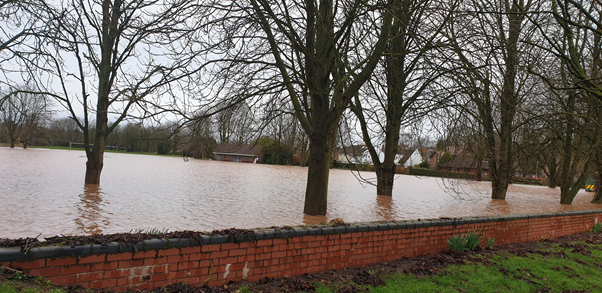
Recreation ground storage during the February 2020 flooding. (Source unknown)
What measures are included in the proposed FAS?
The Lowdham FAS explored the options to alleviate flooding within Lowdham and identified that upstream storage would be the most effective. A single site has been selected near Lowdham Grange, which is optimal for storing up to 87% of flood flows from the Cocker Beck and its tributaries.

Proposed Flood Storage Reservoir location. (EA, 2022)
A reservoir to store flood flows is proposed for the site, which will remain dry most of the time, only filling with water when the Cocker Beck rises in certain flood conditions. The design will account for the effects of climate change throughout the lifetime of the proposed reservoir.

Due to the scale and position of the proposed flood storage reservoir, it will be classified as a Category A Reservoir under the Reservoirs Act, 1975. The Environment Agency will be the operator of the reservoir once constructed, to ensure it meets all statutory requirements and remains safe into the future.
 Clay to construct the earth embankments for the reservoir will mostly be excavated from the site itself. This offers a significant reduction in both cost and carbon emissions during construction, as well as reducing the need for vehicular movements, which could potentially have been disruptive for the community. Excess soil excavated to create the storage area will be used during the final landscaping of the site.
Clay to construct the earth embankments for the reservoir will mostly be excavated from the site itself. This offers a significant reduction in both cost and carbon emissions during construction, as well as reducing the need for vehicular movements, which could potentially have been disruptive for the community. Excess soil excavated to create the storage area will be used during the final landscaping of the site.
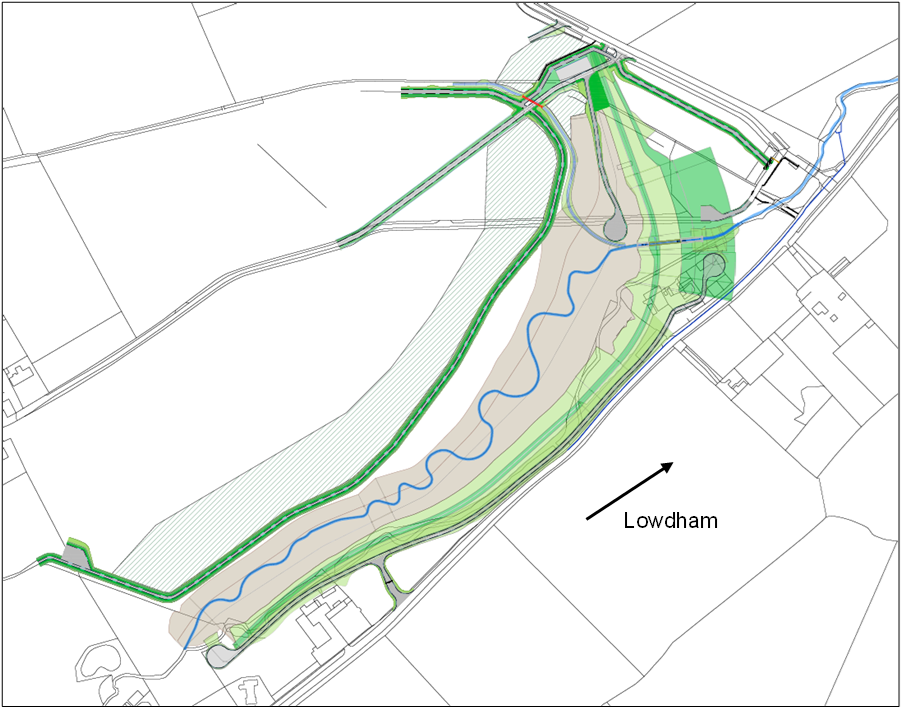
Proposed flood storage reservoir layout. (Arup, 2022)
Very careful consideration of the whole life carbon impact is being taken through the design process for the construction and operational phase of the reservoir’s lifetime. We plan to use low carbon concrete throughout the reservoir to construct the control structure and ancillary apparatus.
Lowdham FAS Biodiversity Net Gain
The Scheme is aiming to achieve a 20% Biodiversity Net Gain (BNG), introducing new habitat enhancements for ecology local to the site. From December 2023, a minimum requirement of 10% BNG will have to be achieved by all developments, as part of the enactment of the Environment Act 2021.

A combination of on-site and off-site measures will be used to mitigate the development of the site and reach the 20% BNG target. We will be expanding existing woodland, creating new woodland on site, and enhancing existing habitat such as hedgerows and grassland.
In recent years the spread of Himalayan Balsam, which is an invasive species that can dominate the banks of watercourses, has accelerated throughout the Cocker Beck catchment including the reservoir site. The Environment Agency has begun a Himalayan Balsam treatment programme along 9km of the Cocker Beck, working in partnership with Nottinghamshire County Council.
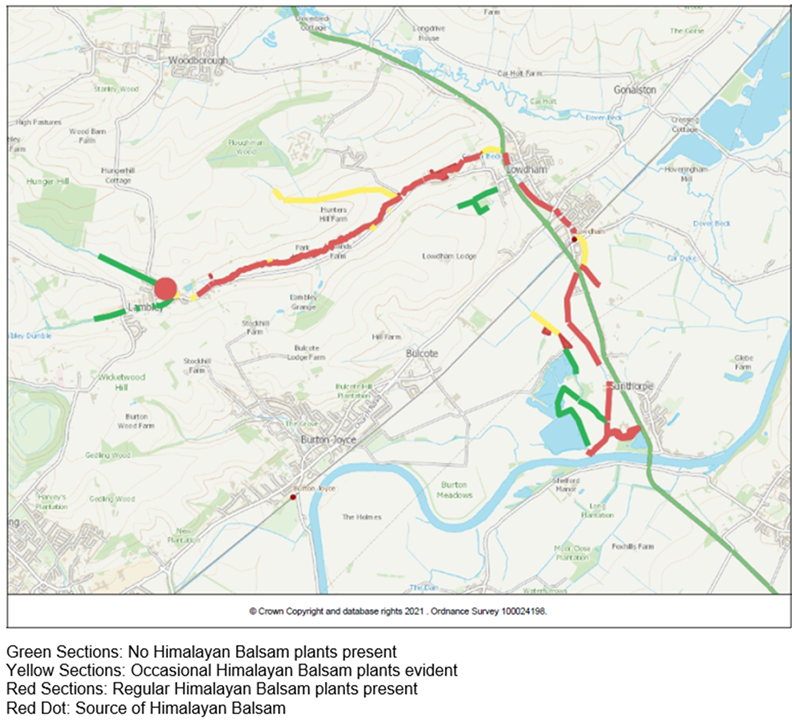
Himalayan Balsam presence in the Cocker Beck circa early 2022. (NCC, 2022)
Lowdham FAS Progress
Full planning approval has been awarded to the Lowdham FAS following a 19-month consultation period. The application was presented at the May 2023 Newark and Sherwood Planning Committee meeting where members unanimously voted to approve the Scheme.
The decision notice can be found using planning reference 22/02188/FULM on the NSDC planning portal website (https://www.newark-sherwooddc.gov.uk/your-council/planning-services/)
Full Business Case (FBC) approval was given to the Scheme in late June. The FBC sign-off is major milestone and the final appraisal stage. The Scheme will now proceed to construction.
The table below sets out the key milestones for the Lowdham FAS


In mid-July final on-site soil compaction trials are being completed to test suitability of quarry sourced clay. The Lowdham FAS Imported material will be used to improve site “won” soils where required to meet the design specification.
The Scheme’s construction partner, Jackson Civil Engineering, have mobilised to site in October 2023. Once underway, the construction programme will last two years, and conclude in Autumn 2025.
At the end of the construction phase, safety checks will be undertaken to ensure the reservoir is operating as designed and is compliant with the Reservoirs Act,1975. We anticipate the checks will be completed within Spring 2026, and once complete, the reservoir will be in full operation.
The Lowdham Cocker Beck Flood Alleviation Scheme is being delivered in Partnership with:

Flood Wall Repair
We have recently completed capital maintenance of a flood alleviation wall in Lowdham, along a 215m stretch of the Cocker Beck. The work reinstated the existing flood wall, where the watercourse flows adjacent to the playing fields in Lowdham, between Main Street and Epperstone By-pass.
Our work on the Flood Wall has reduced the likelihood of flooding by diverting flood water to the storage area (playing field). We have reinstated the Flood Wall to its designed flood protection level and lowered the level of the storage area to provide additional capacity. This work will complement the proposed capital scheme to create additional upstream storage.
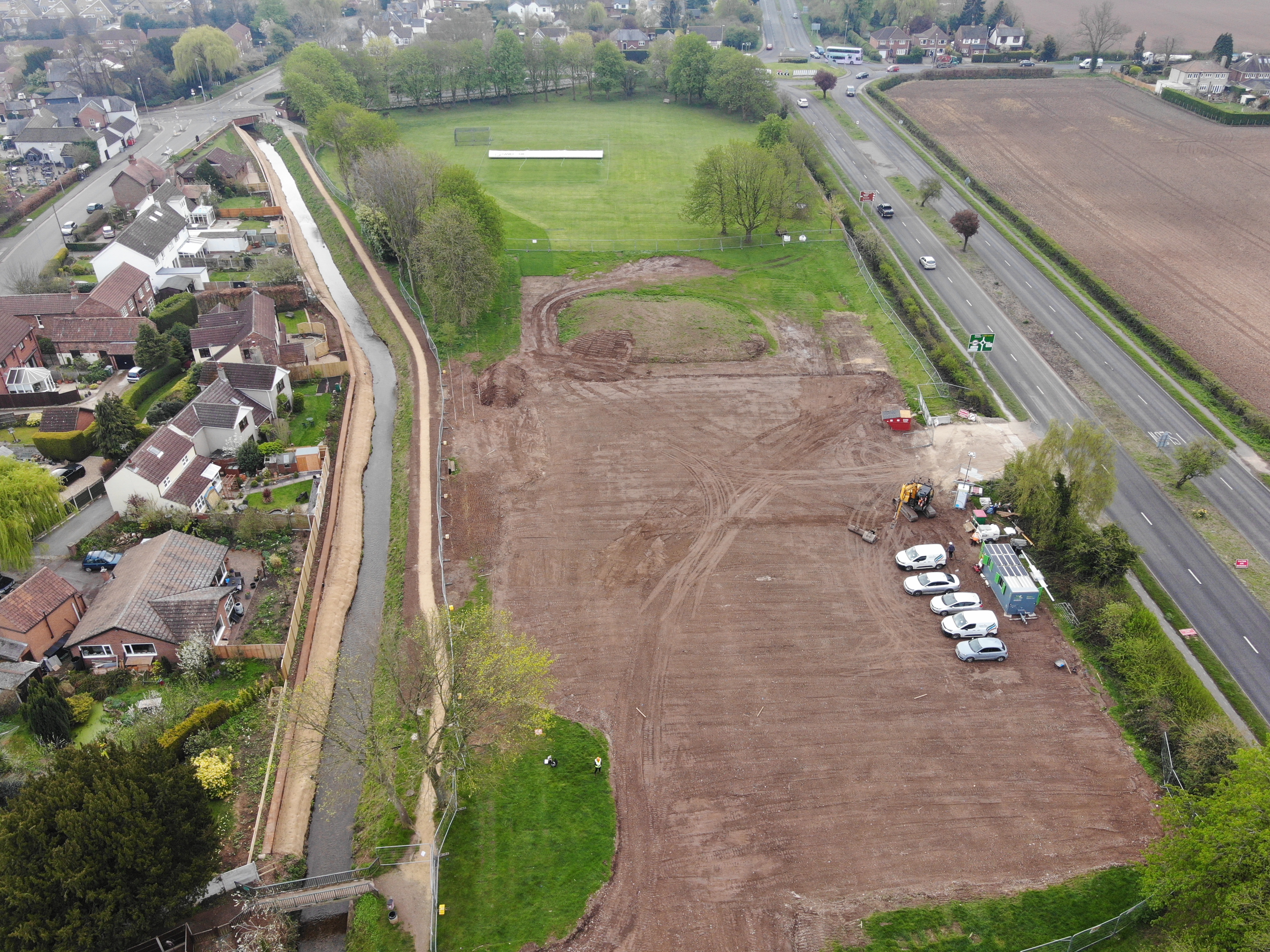 Drone image of the Lowdham Flood Wall works. Environment Agency 2022
Drone image of the Lowdham Flood Wall works. Environment Agency 2022
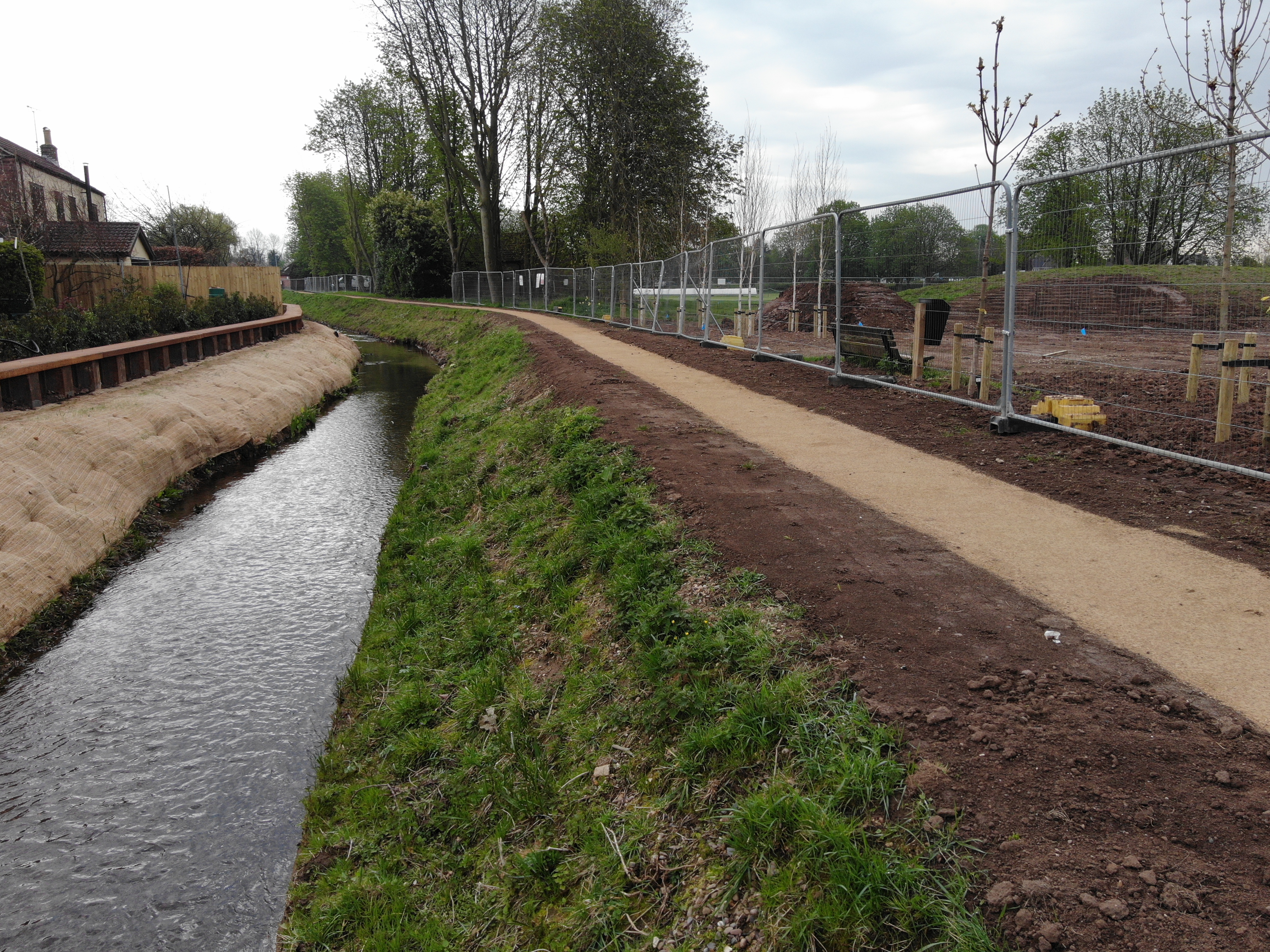
Lowdham Flood Wall works. Environment Agency 2022.
You can find details of our current maintenance programme in the area by searching for Lowdham on our Asset Management website or downloading the Cocker Beck maintenance schedule.
Feedback
We would appreciate if you could spare a few minutes to complete a short survey about this information page.
Please contact us if you have any questions
You can find further information, or answers to any specific queries, by contacting EMDenquiries@environment-agency.gov.uk
Audiences
- Businesses
- Elected representatives, including MPs
- Local councils
- Local authorities
- District and parish councils
- Land owners
- RFCCs
- Elected representatives, including MPs
- Members of the public
- Community groups
- Flood action groups
- Environment Agency colleagues
- Lead Local Flood Authorities
- Local Risk Management Authorities
- Flood Resilience Forums
Interests
- Flood management
- Specific projects, issues, or activity pages

Share
Share on Twitter Share on Facebook